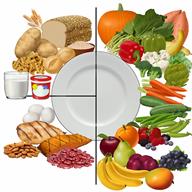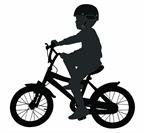Hypertension, Pediatric
High blood pressure (hypertension) is when the force of blood pumping through your child's arteries is too strong. The arteries are the blood vessels that carry blood from the heart throughout the body.
A blood pressure reading consists of a higher number over a lower number.
The first number is the highest pressure reached in the arteries when your child's heart beats (systolic blood pressure).
The second number measures the lower pressure in the arteries when your child's heart relaxes between beats (diastolic blood pressure).
A normal blood pressure depends on your child's sex, age, and height. Your child may have elevated blood pressure if his or her blood pressure is higher (greater than the 95th percentile) than other children of the same sex, age, and height. For children ages 13 and older, a normal blood pressure should be lower than 120/80.
Talk with your child's health care provider about what a healthy blood pressure is for your child.
Once your child reaches age 3, a blood pressure check needs to be done every year. Children with high blood pressure are at higher risk for heart disease and stroke as adults.
What are the causes?
High blood pressure in children can develop on its own without another medical cause (
essential hypertension). Essential hypertension is more common in children older than age 12. Causes of essential hypertension are also called risk factors. Obesity is the most common risk factor. Other common risk factors are:
Hypertension can also develop from another medical condition (
secondary hypertension). Secondary hypertension is less common than essential hypertension overall, but it is more common in children younger than age 12. Kidney disease is a common cause of secondary hypertension in children. Other causes include:
Tumors that secrete substances that raise blood pressure.
Being born with narrowing of a major blood vessel that carries blood away from the heart (coarctation of the aorta).
A disease of the glandular system (endocrine disease).
What are the signs or symptoms?
Most children with hypertension do not have any symptoms unless their blood pressure is very high. If your child does have symptoms, they may include:
How is this diagnosed?
Your child's health care provider may diagnose hypertension by using a stethoscope and measuring your child's blood pressure with a cuff placed around your child's arm. To confirm the diagnosis, your child's health care provider will take your child's blood pressure at three separate visits to see whether the numbers are high at each one.
If your child is diagnosed with hypertension, more tests will be done to see if there is a medical cause for the hypertension. These may include:
How is this treated?
Treatment for this condition depends on the type of hypertension your child has.
Follow these instructions at home:
Lifestyle
-
Make sure your child's diet is low in salt and added sugars. Serve your child lots of fruits and vegetables. Work with your child's health care provider and a dietitian to come up with a healthy eating plan for your child. The DASH eating plan may be recommended for a teen or older child. DASH stands for Dietary Approaches to Stop Hypertension.
-
Work with your child's health care provider on a weight-loss program if your child is overweight.
-
Make sure your child gets enough physical activity. Your child should be running and playing actively (aerobic activity) for at least 60 minutes every day. Ask your child's heath care provider to recommend physical activities for your child.
-
Limit your child's screen time to less than 2 hours each day.
-
Do not allow your child to use any products that contain nicotine or tobacco. These products include cigarettes, chewing tobacco, and vaping devices, such as e-cigarettes. If your child needs help quitting, ask the health care provider.
General instructions
-
Give your child over-the-counter and prescription medicines only as told by your child's health care provider.
-
Once your child is 3 years old, make sure your child gets a blood pressure check at least once a year. If your child has risk factors for hypertension, your child's health care provider may do blood pressure checks at every visit.
-
Keep all follow-up visits. This is important.
Contact a health care provider if:
-
Your child develops a severe headache.
-
Your child develops vision changes, such as blurry vision.
-
Your child has chest pain.
-
Your child is short of breath.
-
Your child has a nosebleed that will not stop.
-
Your child has a seizure.
These symptoms may be an emergency. Do not wait to see if the symptoms will go away. Get help right away. Call 911.
Summary
-
High blood pressure (hypertension) is when the force of blood pumping through your child's arteries is too strong.
-
Hypertension in children is diagnosed by comparing a child's systolic and diastolic pressure to the blood pressure of other children who are the same sex, age, and height.
-
Most children with hypertension do not have symptoms. Children with high blood pressure are at higher risk for heart disease and stroke as adults.
-
For most children, lifestyle changes that include weight loss, physical activity, and diet changes are the best treatment for hypertension.
This information is not intended to replace advice given to you by your health care provider. Make sure you discuss any questions you have with your health care provider.

